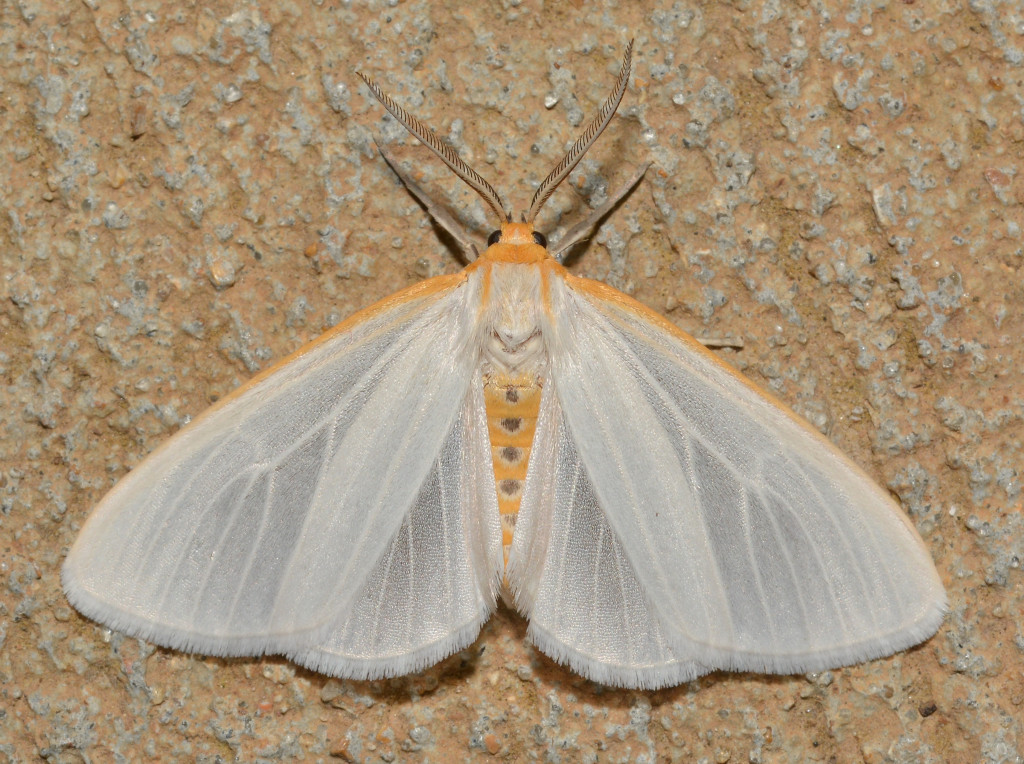
By Brianna Nugent
As the sun sets over Nebraska’s expansive plains and rolling hills, a hidden world comes to life — the realm of moths, creatures of the night whose diversity and adaptations often go unnoticed. National Moth Week, celebrated globally each year, offers a unique opportunity to delve into the fascinating world of these often-overlooked insects and appreciate their importance in our ecosystems.
Masters of Adaptation
Nebraska’s diverse landscapes provide habitat for a wide array of moth species, each uniquely adapted to its environment. From the bustling urban areas to the tranquil prairies and dense woodlands, moths have evolved a remarkable set of adaptations that enable them to thrive in their respective niches.
One of the most striking adaptations of moths is their incredible diversity in coloration and wing patterns, which often serve as camouflage to evade predators or attract mates. Some moths mimic the appearance of leaves or tree bark to blend seamlessly into their surroundings, while others display vibrant colors to warn predators of their toxicity.
Moths also are experts in navigation. Males have highly sensitive antennae that can detect pheromones released by potential mates over several miles away, allowing them to locate partners in the dark. Additionally, nocturnal moths are believed to navigate using celestial bodies, such as the stars and moon. To ensure they are always flying upright, moths can adjust their flight track to keep the light source at a constant angle to their eye. When you see moths chaotically gathering near your porch light, they are attempting to orientate themselves to the light. As they constantly turn inwards to keep the light at their backs, they are met with flight limitations, causing them to spiral until they inevitably collide with the light.
Bat Evasion
One of the most impressive adaptations that some moth species have developed is their ability to disrupt bat sonar. Moths and bats have been in an evolutionary arms race of survival for roughly 60 million years. Scientists have been perplexed by the various adaptations that moths have developed to confuse or deter their bat foes.
A variety of studies have been conducted since the 1980s on different moth species, including tiger and luna moths. The delicate cycnia moth (Cycnia tenera), found throughout Nebraska, is a toxic moth equipped with specialized membranes on their abdomens that vibrate to create ultrasonic sound waves. The high-pitched sounds produced by these moths not only act as warning to bats on the hunt, they are also believed to jam the bats’ sonar.
Luna moths (Acticus luna) went a different evolutionary route and opted for long, spiraled tails. These tails not only add to their striking appearance, they are also perfectly designed to misdirect bat attacks. Two separate studies were published in 2016 that researched how Luna moth tails aid in the moth’s evasion from bats. Both studies discovered that the combination of the spiral along with the cupped end of the tail creates an echo from all directions and extends past the moth’s body, preventing bats from pinpointing their abdomen.
Celebrating National Moth Week in Nebraska
National Moth Week, typically celebrated in July, encourages people of all ages to observe and document moths in their local environments. Whether you’re a seasoned entomologist or a curious amateur naturalist, there are many ways to participate:
- Moth Watching Events: Check local nature centers, parks or conservation organizations for public moth watching events. These gatherings often include moth traps and blacklight setups to attract and observe moths up close. Nebraska Game and Parks in collaboration with an entomologist from UNL Extension is hosting a Moth Night on Saturday, July 27, 8:30-10:30 p.m. at the Schramm Education Center.
- Backyard Mothing: Set up your own moth trap using a light source and a white sheet or screen. You can even flip on your porch light for an hour or so and see what stops by!
- Photography and Documentation: Capture photos of moths you encounter and share them on citizen science platforms like iNaturalist or Project Noah. Your observations contribute to our understanding of moth distributions and behavior.
- Learn from Experts: Attend workshops or webinars hosted by local experts to learn more about moths, their biology and conservation.
- Create Moth Habitats: Plant native vegetation that moths prefer, such as native wildflowers and grasses, to provide food and shelter for these beneficial insects.
By participating in National Moth Week, Nebraskans can gain a deeper appreciation for the beauty and ecological importance of moths. These insects play vital roles as pollinators, food sources for wildlife, and indicators of environmental health. Understanding and conserving Nebraska’s moth diversity contributes to the preservation of our natural heritage for future generations to enjoy.
As the stars emerge in Nebraska’s expansive night sky, take a moment to marvel at the intricate world of moths — a testament to nature’s endless creativity and adaptability.
